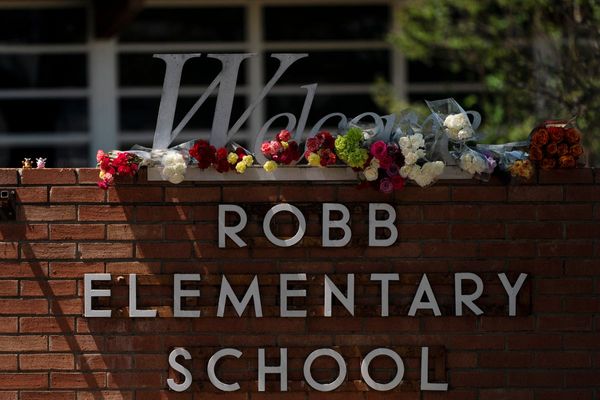
In his 1961 farewell address, Dwight D Eisenhower warned the nation against the “unwarranted influence” of the military-industrial complex. But a lesser known part of the speech was addressed to universities: “In the same fashion, the free university, historically the fountainhead of free ideas and scientific discovery, has experienced a revolution in the conduct of research. Partly because of the huge costs involved, a government contract becomes virtually a substitute for intellectual curiosity.”
We didn’t listen.
For the better part of the pandemic, I’ve been researching the defense industry’s ties to college campuses as part of an investigative fellowship for the magazine In These Times. On 11 August, we published a 4,300-word feature article on Lockheed Martin’s sweeping recruitment on college campuses.
We found an environment in which Stem students are funneled into the defense industry through recruitment, research, financial assistance or some combination of the three.
Lockheed offers cash-prize competitions, scholarships and paid internships to students which have served as pipelines to employment. In 2020, the company hired 2,600 interns and claimed over 60% of graduating former interns converted to full-time jobs.
On campus, Lockheed has set up recruiting tables in the lobbies and hallways of student buildings and hosts workshops on everything from space exploration to résumé-building. At the University of Texas at Arlington, a $1.5m donation resulted in one of their buildings being renamed the Lockheed Martin Career Development Center.
But the company’s signature recruiting event, which is hosted at more than a dozen universities, is something called Lockheed Martin Day. Recruiters attract students with virtual reality demos, flight simulators and, in some cases, landing their helicopters directly on campus. Company officials have been known to offer on-the-spot job and internship opportunities to students during the event.
Additionally, Lockheed has poured resources into the financial support and recruitment of students at historically Black colleges and universities (HBCUs), earning its place as the number one industry supporter of HBCU engineering institutions for seven years in a row.
But before anyone says this is a good thing, it’s worth pausing to ask ourselves how we got here in the first place.
When Black women hold the highest average student loan debt ($41,466), it’s hard to argue against additional financial support no matter where it comes from. Unless you start with a more basic question: why do Black women graduate with the largest debt burden? Why are HBCU endowments, on average, 70% smaller than other universities?
Why is $1.7tn for Lockheed’s F-35 fighter jet considered a worthwhile investment but $1.7tn in student debt relief considered a handout?
The answer boils down to what priorities we set as a nation and the investments we are willing to make based on those priorities.
Last year, the Biden-Harris administration announced an unprecedented $5.8bn investment for HBCUs. By comparison, the administration has sent nearly twice that figure in military assistance to Ukraine.
This country reached a grim milestone in 2020. For the first time, government funding to Lockheed Martin exceeded funding to the Department of Education. When a nation spends more on a single military contractor than the agency tasked with overseeing college financial assistance, Lockheed’s scholarships seem less like an act of charity and more like intentional policy choices.
While Lockheed’s presence on college campuses goes back decades, its scholarship program was only launched in 2019. Following Donald Trump’s 2017 Tax Cuts and Jobs Act, Lockheed made a commitment to invest $50m in Stem education enrichment programs and a Stem scholarship program over the next five years. Hundreds of millions of dollars more went to employee training and other education initiatives including tuition assistance for employees, research and development, and award money for competitions.
Corporations will have saved millions in profits while adding nearly $2tn to the deficit over the next decade. At the same time, Republican officials in congress argued that universities, which have traditionally been tax-exempt, were hoarding their wealth and needed to pay up.
The 2017 tax cuts included a provision to impose a 1.4% excise tax on the endowments of the wealthiest private universities in the country. One Washington Post reporter explained that “the revenue from the endowment tax will not be used to lower the cost of higher education but instead to offset corporate tax cuts”.
If budgets are moral documents, what do ours say about us?
By the air force’s own admission, the F-35 has been a failure. What was supposed to be a lightweight, low-cost, multi-purpose fighter jet has, over the years, gotten heavier, more expensive and less effective. As the air force’s top general put it last year, “The F-35 is a Ferrari. You don’t drive a Ferrari to work every day, you only drive it on Sundays.”
I’ll acknowledge that these policies have resulted in a complicated reality. Millions of people around the country, including students, now depend on exorbitant defense spending. According to a 2021 Bloomberg report, “nearly every US state has economic ties to the F-35, with 29 states counting on the project for $100m or more in economic activity.” A similar analogy can be drawn based on the defense research at universities that support students, professors and institutional budgets.
But knowing that all of this work is underwritten by the federal government and funded by taxpayers, we could just as easily decide that investing in jobs that improve human lives is more important than investments in ending them.
Lockheed’s presence on college campuses poses this question to us and underscores two competing visions for the university: a political and economic tool in service of the world as it is or an institution dedicated to advancing critical thinking and civic engagement for the world as it could be.
Once the question has been asked, it’s up to us to decide whether we will continue to prioritize war profiteering over posterity.
Indigo Olivier is a Reporter-Researcher at The New Republic







